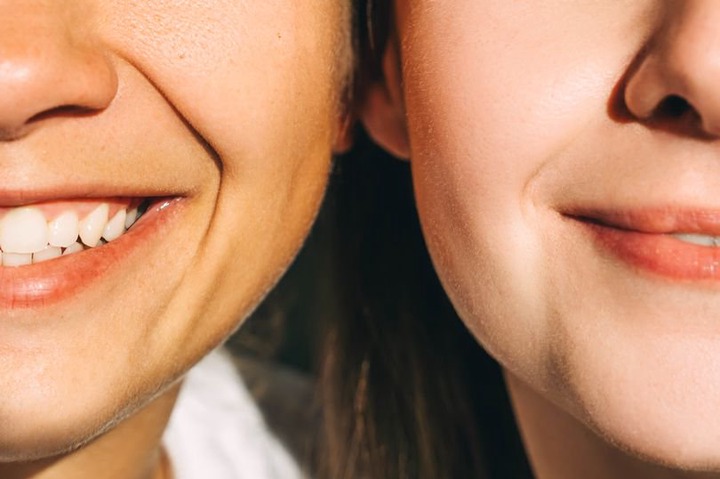Maintaining a healthy mouth and a gleaming set of teeth is simpler than you might think. We all know we need to brush twice daily, keep up with dentist appointments, and use floss and mouthwash as required.
But what if you desire a smile so bright it dazzles everyone around you? With numerous products claiming to whiten smiles and countless online myths about home remedies, which solutions truly deliver results?
GQ had a conversation with cosmetic dentist Dr Joyce Kahng, who dispels dental myths and offers advice on oral health to her substantial social media following, totalling nearly 700,000 fans.
“There are so many products that are marketed to be ‘teeth whitening’ and most of them are probably actually not,” she stated. Dr Kahng pointed out that while many whitening toothpastes can clean the surface, they don’t address underlying issues.
It’s about more than superficial cleaning; true whitening transforms your teeth from the inside out. “We’re talking about removing those stains, breaking them up, and lifting them out of the teeth,” Dr Kahng said.
How do stains start?
As for where stains come from, the California-based dentist warns against typical culprits like coffee, red wine, and smoking. “If it would stain my white coat, it can stain your teeth,” she cautioned.
“They all go in the category of depositing stains on the outside of your teeth,” she explained. Fortunately, these stains can be removed by brushing promptly.
However, if left for too long, the stain can penetrate the teeth, causing them to dull or yellow. The longer it remains, the more difficult it becomes to remove.
“It’s much easier for a teenager to achieve good results from basic over-the-counter strips than for an 80-year-old,” Dr Kahng pointed out.
The best ways to whiten your teeth
Professional whitening treatments
The most effective methods to brighten your teeth include professional whitening treatments carried out at a dentist’s office, where a gel containing approximately 6% hydrogen peroxide is used. In contrast, at-home whitening kits can only contain .1%.
Procedures typically last around 90 minutes, with dentists taking protective measures to ensure maximum effectiveness, such as blocking off saliva, which can neutralise the effects of hydrogen peroxide.
“It’s really about creating the optimal environment for whitening,” said Dr Kahng. “That’s why it’s the quickest way to whiten within a certain time frame.”
At-home whitening strips and trays
At-home whitening strips and trays are also effective when used regularly, according to Dr Kahng. She advises patients to use strips daily for a week or two, taking a break if the teeth start to feel overly sensitive.
“It’s like going to the gym,” she said. “Doing a little bit every day is better than one intense session.”
Home remedies
While there are numerous suggestions for maintaining a pearly white smile using household items, Dr Kahng believes these methods are generally ineffective. Some advocate for the use of baking soda and activated charcoal, but according to her, these merely remove surface stains in the same way toothpaste does.
Coconut oil pulling, an ancient Indian practice of swishing oil in your mouth like mouthwash, is also touted by some as beneficial, but Dr Kahng remains unconvinced.
“Anecdotally, people say that helps, but scientifically, I don’t see it actually whitening the teeth from the inside out,” she said.
Similarly, over-the-counter hydrogen peroxide, which only has a strength of three per cent, won’t affect teeth and can potentially harm the gums, so it should be avoided.
Four expert tips to keep your teeth white
1. Don’t expect permanent results – New stains will start to appear almost immediately unless you completely eliminate everything that causes them. Dr Kahng stated: “Teeth whitening is actually one of those journeys where it requires maintenance throughout your lifetime if you want to maintain a certain colour.”
2. Find your rhythm – The frequency of using whitening products will depend on your personal circumstances. “For me, because I drink coffee and wine, I need to put in a whitening tray once a month,” shared Dr Kahng. “That’s enough to get me back to where I’m happy.”
3. Sensitivity is normal – It’s common to feel some sensitivity when you first start whitening your teeth. Dr Kahng suggests using a toothpaste designed for sensitive teeth, containing either potassium nitrate or nanohydroxyapatite, before or after the whitening process.
4. Teeth whitening isn’t suitable for everyone – According to Dr Kahng, if you’re pregnant or breastfeeding, it’s best to avoid this treatment. Similarly, if you have active cavities, these should be addressed before considering whitening. And don’t expect any changes to veneers, crowns, or bridges – in fact, whitening could potentially damage their surface glaze.
